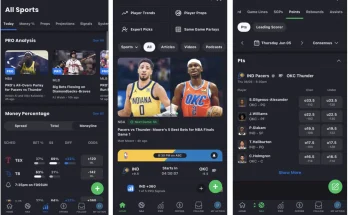You’ve done the research. You’ve crunched the numbers. You feel that surge of confidence—this bet is a sure thing. Then, it all goes wrong. Sound familiar? Well, here’s the deal: the biggest obstacle to successful betting often isn’t the odds or the opponent. It’s your own mind.
Betting psychology is the study of how our mental processes—emotions, biases, and heuristics—influence the decisions we make when stakes are high and outcomes are uncertain. Honestly, understanding this might be the most valuable skill in your arsenal. Let’s dive in.
Your Brain on a Bet: It’s Not Always Rational
We like to think we’re logical creatures. But when money and emotion mix, our brain takes shortcuts. These mental shortcuts, called cognitive biases, are like optical illusions for the mind. They distort reality, leading us to make predictable errors in judgment.
The Illusion of Control and the Gambler’s Fallacy
Two of the most common culprits work in tandem. First, the Illusion of Control. This is that sneaky feeling that you can influence an outcome that is purely random. Choosing your “lucky” number, wearing a specific jersey, throwing the dice a certain way—these rituals create a false sense of agency. You feel like an active participant, not just a spectator hoping for a random result.
Then there’s its partner in crime, the Gambler’s Fallacy. This is the belief that past random events affect future ones. If a coin lands on heads five times in a row, the fallacy whispers that tails is “due.” It feels right, doesn’t it? But the coin has no memory. Each flip is a 50/50 proposition, independent of all others. This bias is why people chase losses or double down after a streak, convinced the universe owes them a win.
Confirmation Bias: Your Brain’s Echo Chamber
This one is a doozy. Confirmation bias is our brain’s tendency to seek out, interpret, and remember information that confirms what we already believe. It’s like having a personal assistant who only brings you news you want to hear.
Imagine you’re convinced a certain football team is going to win. You’ll naturally gravitate toward stats that support your view—their strong offense, the weak opposing defense. Meanwhile, you might unconsciously dismiss or downplay contradictory information, like their key player’s minor injury or a poor record on the road. You build a case for your pre-existing belief, ignoring the red flags. It’s a dangerous, self-constructed trap.
Anchoring: The First Number You See Is a Trap
Anchoring is a cognitive bias where we rely too heavily on the first piece of information we get (the “anchor”) when making decisions. In betting, that initial line or odds number gets stuck in your head.
Let’s say you see a point spread set at -7.5 for your favorite team. That number becomes your reference point. Even if new information comes out—an injury, a change in weather—you’re still mentally tethered to that -7.5. You might dismiss a shift to -6.5 as a bargain or see -9.5 as an overreaction, all because your judgment is anchored to that initial data point. It’s tough to break free.
The Sunk Cost Fallacy: Throwing Good Money After Bad
This is arguably the most emotionally painful bias. The sunk cost fallacy makes us continue a behavior or endeavor because of the resources we’ve already invested—time, money, or emotion—even when it’s clear that abandoning it would be better.
You know the feeling. You’re down a significant amount on a bet. Logically, you should walk away. But the thought of all that “wasted” money is agonizing. So, you place another, riskier bet to try and win it back. You’re not betting to profit anymore; you’re betting to erase a loss. It’s a recipe for disaster, a emotional hole that’s incredibly difficult to climb out of.
How to Fight Back: A Practical Playbook
Okay, so our brains are wired to trick us. What can we do about it? The first step is awareness. Just knowing these biases exist gives you a fighting chance. Here are some actionable strategies.
1. Keep a Decision Journal
This sounds simple, but it’s incredibly powerful. For every significant bet you make, write down:
- Your prediction and the odds.
- The reasoning behind your decision (the real reasons, not the ones you tell your friends).
- Any emotional state you were in (frustrated, overconfident, chasing).
- The outcome.
Review this journal weekly. You’ll start to see your own personal patterns of bias emerge. It’s like holding up a mirror to your decision-making process.
2. Actively Seek Disconfirming Evidence
Once you have a pick in mind, force yourself to play devil’s advocate. Actively search for three solid reasons why your bet might lose. This deliberate practice directly counteracts confirmation bias and forces a more balanced, realistic view of the situation.
3. Implement Strict Bankroll Management
This is the ultimate defense against emotional betting. Decide on a fixed percentage of your total bankroll for each wager (e.g., 1-2%) and stick to it religiously. A pre-commitment strategy like this neutralizes the impulse to chase losses with a “big one” or get carried away after a win. It makes betting a boring, systematic process. And boring is profitable.
4. Use a Pre-Mortem Analysis
Before you lock in a bet, take a minute and imagine it’s tomorrow and the bet has lost. Now, write a brief story of why it failed. What went wrong? What did you overlook? This technique, known as a pre-mortem, unlocks contrarian perspectives you would have otherwise ignored due to overconfidence.
The Final Whistle
In the end, betting isn’t just a game of chance or even pure analysis. It’s a constant, quiet battle with yourself. The market reflects the collective psychology of all its participants—their fears, their greed, their biases. By understanding the quirks and flaws of your own mind, you’re not just reading the odds. You’re starting to read the room, and more importantly, you’re learning to read yourself. And that, honestly, might be the only edge that truly lasts.




